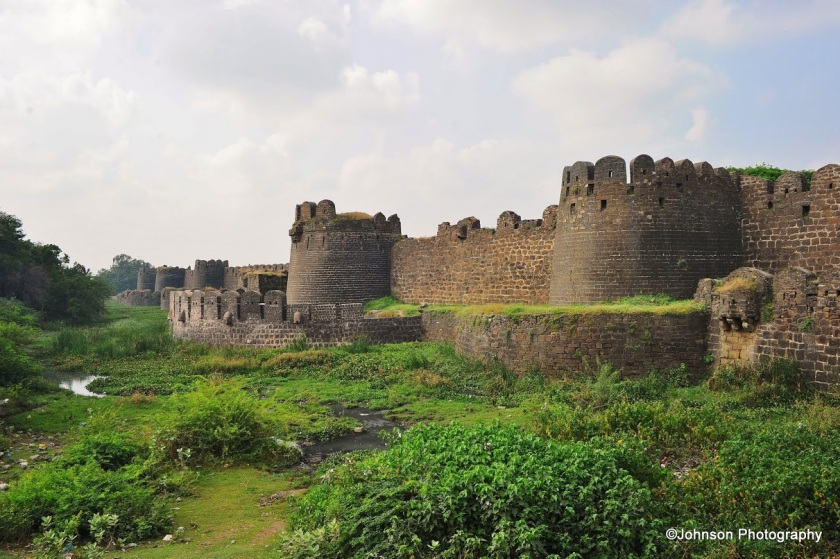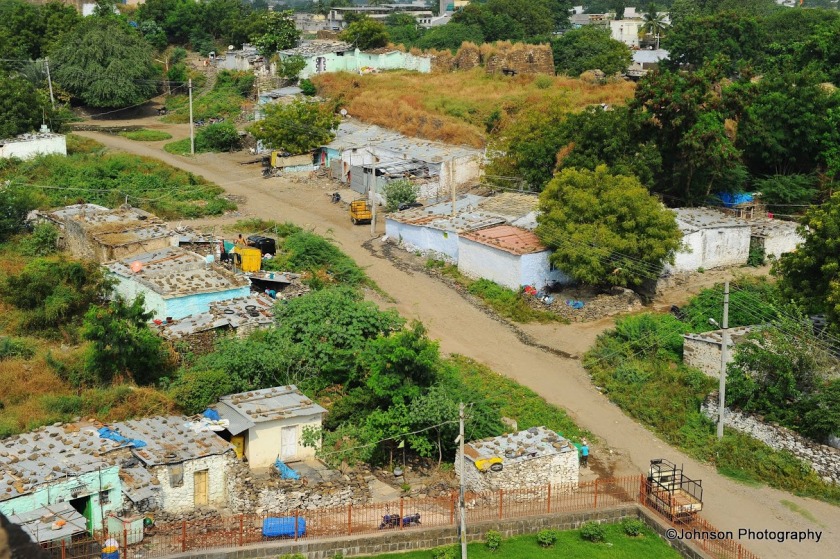Gulbarga fort is located not far from the Gulbarga city center in the Gulbarga district of the Indian state of Karnataka. The fort was originally built by Raja Gulchand, a feudatory of the Kakatiyas of Warangal. The fort was strengthened with heavy fortification by Alauddin Hasan Bahman Shah, the ruler of the Bahmani dynasty. Gulbarga was the capital of the Bahmani Kingdom from 1347 to 1424 AD with its headquarters at Gulbarga fort. In the year 1434 AD the capital was transferred to Bidar. It is said that with the establishment of the Bahmani Kingdom, the Muslim rule took firm roots in the Deccan. The Bahmani Sultans facilitated the immigrants from Iraq, Iran and Central Asia which changed the socio-cultural and religious life in the Deccan but was well amalgamated with Hindu traditions.
The fort was surrounded by a 30 feet wide moat and double fortification. A citadel was made in the center of the fort. This monumental structure was surrounded by 15 ramparts from inside with 26 cannons, some which are 8 meters long and is still well preserved.
The Jami Masjid is the most impressive structure inside the fort. It was built by Muhammad Shah I to commemorate Gulbarga as the capital of the Bahmini Sultanate. The Masjid was designed in line with the Great Mosque of Cordoba in Spain by a Moorish architect. It has a dimension of 216 x 176 feet. The mosque has no open courtyard. The outer passageways surround the prayer hall on three sides and have low open arcades with arches. They form a rectangular layout with ten bays each on the north and the south and seven bays on the east. It is an excellent example of Bahmani architectural style a combination of Persian, Moorish and Indian styles.


























This is so beautiful! I love traveling
LikeLike
Thanks.
LikeLiked by 1 person
No problem 🙂 stop by my blog when you get the chance
LikeLike
For sure
LikeLiked by 1 person
Thank you 🙂
LikeLiked by 1 person
LikeLiked by 1 person
Thanks.
LikeLike
J’ai toujours rêvé de visité un chateau abandonné
LikeLiked by 1 person
Beautiful pictures and wonderful history! I love it.
LikeLike
Thank you very much for your visit and comments.
LikeLiked by 1 person
Merry Christmas ! 🙂
Aliosa 🙂
LikeLike
Thank you very much and wish you also Merry Christmas.
LikeLike
Excellent post.
LikeLike
Thank you very much for stopping by and commenting. Keep visiting.
LikeLiked by 1 person
Fantastic historic post
LikeLike
Thanks.
LikeLike